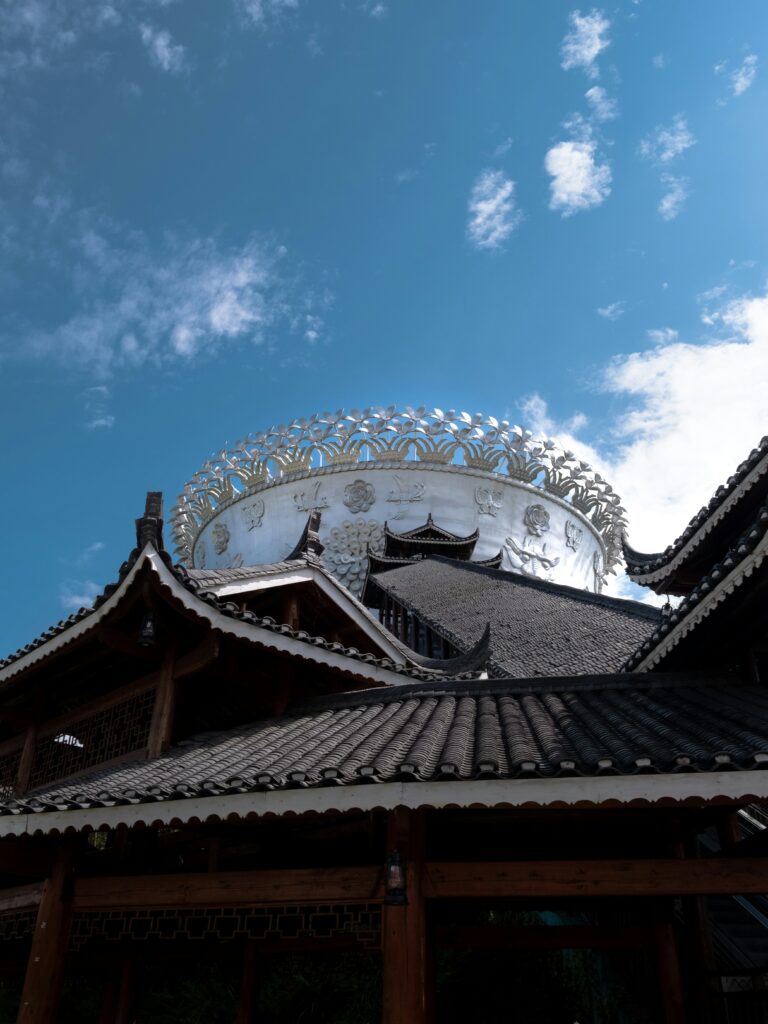The annual National Day holiday is here again. With all the compensatory working days, people are trying to make the “Golden Week” worthwhile. Data shows that this National Day holiday will once again see a travel boom.
On 29 September, China Railway released its forecast that between 29 September and 8 October, there will be 175 million people travelling by rail. The Civil Aviation Administration of China (CAAC) estimates there will be 115,000 flights across the country, up 6.2% from last year and 11.2% compared to pre-pandemic levels in 2019.
Overseas travel, cultural tourism and small-town travel trends continue into the National Day holiday with many young people starting to travel on budget, a new trend after the “special forces” and “slow travel” of last year.
Cultural tourism
Cultural tourism continues to be a popular trend this National Day. C-trip’s survey shows that 60% of travellers are going farther away, while only 20% will travel around the cities of the towns where they’re located. Popular domestic destinations include Beijing, Shanghai, Nanjing, Chengdu, Guangzhou etc. Museums, historical sites and even concerts and performances continue to be popular cultural destinations across the country.
For people living in these larger cities, smaller towns become a great choice. Although this holiday didn’t see another Zibo or Tianshui burst onto the scene, smaller towns and unassuming destinations are still popular. In fact, the closest we get to a viral destination is Shuozhou, Shanxi in North China. The region recently created a sizeable buzz for being the “filming location” of the blockbuster video game Black Myth: Wukong. Many of the buildings and details are modelled after ancient monuments and artefacts from Shanxi, especially Shuozhou. Shanxi became a popular destination in the summer and continued to attract travellers this holiday. Other Monkey King-related package tours are also popular this year due to the game.

Similarly, due to interest in traditional culture, ancient towns, or towns with ancient monuments and architecture are also surging. Douyin data shows that bookings to ancient towns have grown 62% YoY. Xinzhou, Shanxi saw its Douyin bookings go up 1,283%, meanwhile, Xijiang Miao Village grew 601% in bookings.
Going abroad
After the visa waivers from neighbouring countries such as Malaysia, Singapore and Thailand, data from Qunar and Fliggy show that international flight bookings doubled, while bookings from tier-3 cities and below grew 2.5 times. C-trip, on the other hand, released data that visa applications this “Golden Week” grew 70% year-on-year (YoY). Popular destinations include Japan, South Korea, Australia, the United States, Vietnam, New Zealand etc. On 2 October, Thailand had already reported that Chinese travellers to the country increased a whopping 70% YoY, which is 30% more than usual. They project the total number between 1 and 7 October would be up 57% to 144% compared to last year.
The convenience of apps and services the Chinese consumers have known at home meant that some of these need to follow abroad
The convenience of apps and services the Chinese consumers have known at home meant that some of these need to follow abroad. The international version of Didi, for example, saw its downloads surge 55% YoY in September. Cities like Sydney and Melbourne in Australia, Tokyo and Hokkaido in Japan and Cairo, Egypt expect high demand for Chinese ride-hailing. Payment platforms such as Alipay also expanded its presence cross border such as issuing passes that work in Guangzhou and Shenzhen in Guangdong, as well as neighbouring Hong Kong. Alipay’s Grab platform also offers all Chinese services in Southeast Asia.
Reverse travelling
Many younger travellers are now applying “reverse consumption” to travelling. Going to small towns without an established travel industry is one of the ways to get better value for money for most. Altay in Xinjiang went viral due to the popularity of TV miniseries To the Wonder (我的阿勒泰, lit. My Altay).
Interestingly, flights and hotels in popular destinations have lowered their prices ahead of the holiday by 20% on average. International flights to Japan and Singapore saw their prices slashed by over 30%, making some Southeast Asian destinations cheaper to fly to than certain domestic destinations. However, this seems to be a standard practice since last year for airlines and hotels to quickly sell remaining seats and rooms. C-trip data shows that small towns like Ili, Xinjiang, Panzhihua, Sichuan are popular due to lowered flight prices.
This has brought back an early internet buzzword “穷游” (lit. travelling poor) from circa 2005
Young people are moving away from package tours to travelling by themselves to save budget. From travelling by train instead of by air, asking friends for email addresses to register fresh accounts to get discounts, not ordering takeaway, travelling by local public transport or even walking instead of taxi, not buying drinks and eating out, young people have come up with many ways to travel on a budget. This has brought back an early internet buzzword “穷游” (lit. travelling poor) from circa 2005 when the “arty cultured youth“ (文艺青年) travelled around China with tips from the internet to save money.
Fast forward two decades, the convenience brought by web platforms such as online travel agencies (OTA) like C-trip has become, to an extent, what travel agencies were 20 years ago and are an unnecessary cost for the young. Bringing back the DIY spirit of the 00s hipsters might be another reason why the whole Y2K revival trend attracts many. However, updates to the trend are also welcome, for example, rental cars are a nice addition aided by the convenience of today’s platforms.









